Classic Cuba
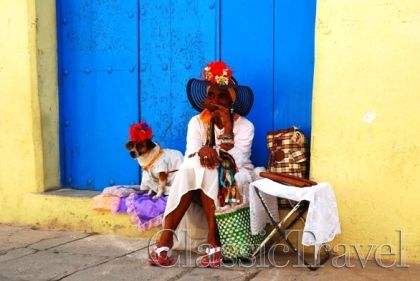
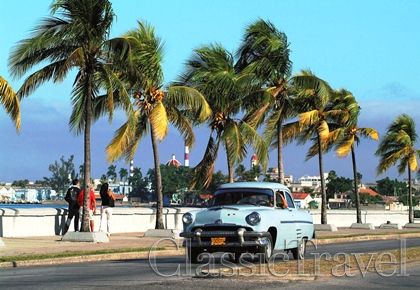
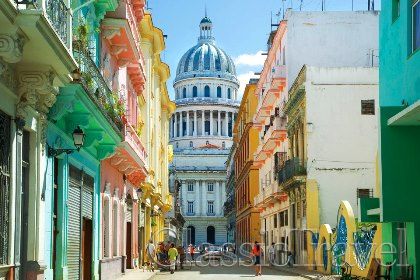
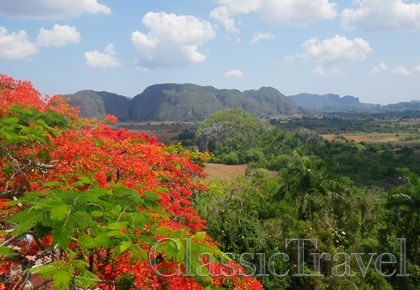
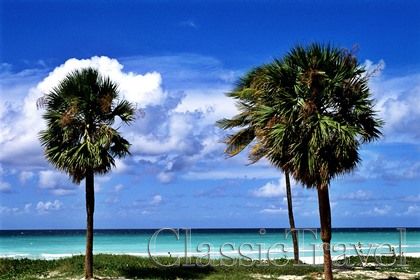
Classic Cuba
Havana - Pinar del Rio - Varadero
Join us as we visit Cuba for the third time! Highlights include: Havana, Old Havana, a ride in classic American cars, visit to cigar factory, rum museum, the scenic countryside and Varadero!
-
Author: Wojciech Malec (Trip Participant)Travel date: May 23-29, 2017Date posted: 15 June 2017
Add Comments or Review the Trip
Day 1 (Sun. 1/21): Flight: Newark - Havana
Meet with the group at Newark at 7:30am. Depart Newark on United Airlines at 10:18am for 1:53pm arrival in Havana. We will be welcomed by our local guide and will transfer to our hotel. Along the way we will do a short panoramic tour by bus of Havana. Check-in to hotel and some time to relax. Welcome dinner in the evening. (D)
Day 2 (Mon. 1/22): Havana - Old Havana
Today after breakfast we'll take a ride in classic American cars to the new part of Havana, where we'll see the modern Plaza de la Revolucion - including buildings/ministries from the revolution and the statue of Jose Marti. We'll visit the University of Havana, one of the oldest universities in the Americas. We will get to know the history of the University, visit different halls and maybe even meet students. Next we'll have lunch at local restaurant. After lunch we'll visit the historic part of Havana, or Old Havana, added to the UNESCO Heritage List in 1982. This part of town is separated into four plazas, the Cathderal Plaza with one of the oldest churches in Cuba; Plaza de Armas surrounded by beautiful colonial buildings - Central Park and Capitol, built in classical Roman style. We'll also visit the Havana Club museum, which is a symbol of Cuba and its biggest export. We will also visit an elementary school. Dinner and accommodations in Havana. (B,L,D)
Optional attraction: The famous La Tropicana dance show (cost ~$100 USD - includes transfers, bottle of rum for 4, 4 drinks and snacks, preferred seating).
Day 3 (Tue. 1/23): Vinales - Piñar del Rio
After breakfast we will head to Piñar del Río, during which time we'll visit a cigar factory. We will see beautiful panoramic views of the Las Terrazas Valley, filled with tobacco farms - added to UNESCO Heritage List. After lunch we will visit a native cave with a boat ride through the underground river. We will also have time to take pictures from the "Mirador Los Jasminez", a panoramic view of the valley. Next we visit Soroa, where we'll see a beautiful botanic garden and learn about how the locals cultivate plants. We will do some trekking to waterfalls. Later we will visit a private tobacco farm, where locals will show us how they prepare the crop to be made into cigars. Return to Havana for dinner. (B,L,D)
Day 4 (Wed. 1/24): Havana - Matanzas - Varadero
After breakfast we will head to Varadero with a stop along the way at Matanzas. Here we will take a walk around this colonial city, making stops to visit schools and meet with local students and teachers. We will also visit a local museum that shows the local cultural traditions of Matanzas. Next we will arrive at Varadero and check in to our hotel. Dinner at our hotel. (B,L,D)
Day 5 (Thu. 1/25): Varadero
Today we will visit the House of Rum, learning how locals make various types of rum. Next we will visit the Dupont House (Xanadu Mansion) to learn about the history of the region and those who lived here. To learn more about Cuban catholics we will visit the Santa Elvira Iglesia, a church built around 1938 that serves locals every Sunday. Finally we will visit the homes of local families. Optional trip in the late afternoon in classic cars along the highway. Dinner at our hotel. (B,L,D)
Day 6 (Fri. 1/26): Varadero - Havana
After breakfast we will transfer back to Havana. Along the way we will stop by the Bacunayagua Bridge to marvel at the beautiful view of the valley and take some time to buy souvenirs. We will arrive in Havana in the afternoon and check-in to our hotel. Afterwards we will take a walk around old town. Farewell dinner at a local restaurant. (B,L,D)
Day 7 (Sat. 1/27): Return flight to Newark
After breakfast and some final relaxation, we will transfer to Havana airport around 10:30am and depart for the USA at 2:53pm, arriving to Newark Airport around 6:18pm. (B)
Abbreviations: B - Breakfast; L - Lunch; D - Dinner
Cuba
Cuba, officially the Republic of Cuba, is a country in the Caribbean comprising the main island of Cuba, the Isla de la Juventud and several archipelagos. Havana is Cuba's capital and its largest city. The United States is to the north of Cuba 150 km (93 mi) away, the Bahamas and the Turks and Caicos Islands to the northeast, Mexico to the west 210 km (130 mi) away, the Cayman Islands and Jamaica to the south and Haiti to the southeast.
Cuba was inhabited by Amerindian tribes before the landing of explorer Christopher Columbus in 1492, who claimed it for the Kingdom of Spain. Cuba remained a colony of Spain until the Spanish–American War of 1898, after which it gained nominal independence as a de facto U.S. protectorate in 1902. The fragile republic endured increasingly radical politics and social strife, and despite efforts to strengthen its democratic system, Cuba came under the dictatorship of Fulgencio Batista in 1952. Growing unrest and instability led to Batista's ousting in January 1959 by the July 26 movement, which afterwards established a government under the leadership of Fidel Castro. Since 1965 the country has been governed by the Communist Party of Cuba.
Cuba is the largest island in the Caribbean and, with over 11 million inhabitants, the second-most populous after Hispaniola. It is a multiethnic country whose people, culture and customs derive from diverse origins, including the aboriginal Taíno and Ciboney peoples, the long period of Spanish colonialism, the introduction of African slaves, and a close relationship with the Soviet Union in the Cold War.
Cuba is ranked very high for human development by the United Nations, and high for health and education. In 2015, it became the first country to eradicate mother-to-child transmission of HIV and syphilis, a milestone hailed by the World Health Organization as "one of the greatest public health achievements possible."
Havana
Havana is the capital city, largest city, province, major port, and leading commercial centre of Cuba. The city proper has a population of 2.1 million inhabitants, and it spans a total of 728.26 km2 (281.18 sq mi) – making it the largest city by area, the most populous city, and the third largest metropolitan area in the Caribbean region. The city extends mostly westward and southward from the bay, which is entered through a narrow inlet and which divides into three main harbours: Marimelena, Guanabacoa and Atarés. The sluggish Almendares River traverses the city from south to north, entering the Straits of Florida a few miles west of the bay.
The city of Havana was founded by the Spanish in the 16th century and due to its strategic location it served as a springboard for the Spanish conquest of the continent becoming a stopping point for the treasure-laden Spanish galleons on the crossing between the New World and the Old World. King Philip II of Spain granted Havana the title of City in 1592. Walls as well as forts were built to protect the old city. The sinking of the U.S. battleship Maine in Havana's harbor in 1898 was the immediate cause of the Spanish–American War.
Contemporary Havana can essentially be described as three cities in one: Old Havana, Vedado and the newer suburban districts. The city is the center of the Cuban government, and home to various ministries, headquarters of businesses and over 90 diplomatic offices. The current mayor is Marta Hernández from the Communist Party of Cuba (PCC). In 2009, the city/province had the 3rd highest income in the country.
The city attracts over a million tourists annually, the Official Census for Havana reports that in 2010 the city was visited by 1,176,627 international tourists, a 20.0% increase from 2005. The historic centre was declared a UNESCO World Heritage Site in 1982. The city is also noted for its history, culture, architecture and monuments.
Varadero
Varadero is foremost a tourist resort town, boasting more than 20 km of white sandy beaches. The first tourists visited Varadero as early as the 1870s, and for years it was considered an elite resort. In 1910 the annual rowing regatta was started; five years later the first hotel, named Varadero and later Club Nautico, was built. Tourism grew in the early 1930s as Irénée du Pont, an American millionaire, built his estate on the peninsula. Many famous and infamous people stayed in Varadero, for example Al Capone.
After the Cuban Revolution in 1959, many mansions were expropriated from their rich owners. These mansions soon became museums. As a symbol of the new integrated tourism for Cubans and foreign visitors of all social classes, the Park of the 8000 Cubicles (Parque de las 8000 Taquillas) was built in 1960. Visitors could leave their belongings in the basement of the park, had access to sanitary installations and gastronomic services on the first floor, and could rent bathing articles and swimsuits. The surroundings of the park became the center of the city. Between the 1960s and 1980s Varadero transformed itself into a cultural centre. During those years the central park (8000 Taquillas) (located between 44th and 46th Street) saw countless concerts, festivals and sporting events.
The 1990s brought the start of another hotel building campaign, mostly in the 4-star and 5-star segment. Many of the hotels are operated or co-owned by foreign businesses like Melia, Barcelo, TRYP, etc. (France's Club Med used to have a property but has since left Varadero.) As international tourism was opened up, the local population expanded with the arrival of people, some in key economic positions, from other parts of Cuba. As a consequence, Varadero has lost much of its social and cultural life and its traditions. The central park, the cinema and various cultural meeting places were neglected in favor of a hotel-centred all-inclusive-tourism and finally closed. The International Carnival, an initiative of Cubans and foreigners started in the 1980s, also ceased.
Cuban woman in Varadero
In addition to its most valued resource, the beach, Varadero has natural attractions such as caves and a chain of easily accessed virgin cays. There are also cultural, historical and environmental attractions in the vicinity, such as the cities of Matanzas and Cárdenas, the Zapata Peninsula and the resort of San Miguel de los Baños. Varadero, which is a free port, also possesses facilities for scuba diving, deep-sea fishing, yachting and other water sports.
Varadero receives more than 1 million tourists annually, and is primarily visited by European and Canadian tourists. The number of U.S. tourists visiting Varadero, although increasing, has been limited because of the U.S. government restrictions that make it difficult for U.S. citizens to visit Cuba as tourists.


